Neighbouring rights

|
A general term for the rights granted to three parties when using copyrighted works: performers, producers of records (phonograph records, recording tapes, CDs, and other media on which sound is fixed), and broadcasting companies. Also called neighboring rights for short. [Masao Handa] History and Overview of Neighboring RightsPerformers, phonogram producers, and broadcasting organizations are generally involved in utilizing existing works and communicating them to the general public, and therefore are closely related to copyright, but since they are not the creators of works themselves, they cannot be considered authors, and therefore cannot be protected by copyright. However, with the development of reproduction technology, there was a demand to protect the economic interests of these individuals, and in October 1961, 39 countries gathered in Rome to hold a diplomatic conference, which led to the establishment of the International Convention for the Protection of Performers, Producers of Phonograms and Broadcasting Organizations (commonly known as the Neighboring Rights Convention or the Performers, etc. Protection Convention). Japan has stipulated provisions regarding neighboring rights in its Copyright Law (Law No. 48 of 1970) in line with this treaty. Under the current Copyright Law, performers are granted the right to record, broadcast, cable broadcast, transmit and lend their performances, phonogram producers the right to copy, transmit and lend their phonograms, broadcasting organizations are granted the right to copy, re-broadcast, cable broadcast, transmit and communicate television broadcasts, and cable broadcasting organizations are granted the right to copy, broadcast, re-cable broadcast, transmit and communicate cable television broadcasts. In addition, performers and phonogram producers are granted the right to claim secondary use fees for commercial phonograms, the right to claim remuneration for the lending of commercial phonograms, and the right to claim compensation for private recording and recording. Japan joined the Neighboring Rights Treaty in October 1989. [Masao Handa] Neighboring rights issues in the digital network eraWith the development of digital technology and communication technology, various information can be input into computers as digital data, and can be distributed interactively over digital networks such as the Internet. As a result, various problems have arisen in the conventional neighboring rights system, which holds that performers, record producers, broadcasting companies, and cable broadcasting companies are the respective rights holders. First, the rights of performers were addressed by granting the right to make available for transmission (Article 92-2) through the amendment of the Copyright Law in 1997. In this regard, in order to resolve the complicated issue of rights processing when making secondary use, several groups to which performers belong established a corporation to handle the centralized processing of neighboring rights (April 2009). The revised law, which came into effect on January 1, 2010, also established a system for cases in which the holder of neighboring rights is unknown, similar to the arbitration system established for copyright holders, in order to deal with cases in which the whereabouts of performers, etc., are unknown, which can be problematic when making secondary use of past broadcast programs, etc. on the Internet (Article 103 of the same law). Next, with regard to the rights of record producers, the 1997 amendment to the Copyright Law granted them the right to make available for transmission (Article 96-2 of the same law), but for broadcasting they are only allowed the right to claim secondary royalties for commercial records. In this regard, the 2006 amendment to the Copyright Law made it so that for certain IP multicast broadcasting (for which the right to make available for transmission may apply), the permission of the record producer is not required (although a reasonable amount of compensation must be paid). However, even for the same act of "transmitting video," whether it is "automatic public transmission" or "broadcast/cable broadcasting" makes a big difference in terms of whether record producers can exercise their permission rights, and so there is room for reexamination of the nature of communications and broadcast/cable broadcasting. As for the rights of broadcasting companies (cable broadcasting companies), the amendment of the Copyright Law in fiscal 2002 has given them the right to make available for transmission (Articles 99-2 and 100-4 of the same Law). With the advent of digital networks, there have been cases in which businesses that use digital recording and video equipment and servers to provide services such as the recording and transfer of broadcast programs have been subject to injunctive relief from broadcasting companies for infringement of reproduction rights (Rokuraku case, etc.). However, it is also necessary to take into consideration the convenience of legitimate users brought about by digital technological innovation, and careful consideration is required to determine the content of each service and the entity that performs reproduction, etc. In addition, with the advent of digital networks, there has been a continuous stream of cases in which not only unscrupulous businesses but also ordinary users infringe on the transmission rights held by neighboring rights holders on the Internet. As a result, neighboring rights organizations and others are conducting educational activities to raise awareness of neighboring rights, such as by sending individual warning letters. [Shinichi Takada] "Copyright and Neighboring Rights" by Claude Colombet, translated by Miyazawa Hiroaki (1990, Daiichi Shobo)" ▽ "An Introduction to Copyright in the Music Business by Sato Masato - A Guide to the Rights System for Beginners (2008, Diamond Inc.)" ▽ "Copyright Law Overview by Handa Masao, 14th Edition (2009, Hogaku Shoin)" ▽ "JASRAC Overview - Music Copyright Law and Management" edited by Montani Nobuo (2009, Nippon Hyoronsha)" [References] | |Source: Shogakukan Encyclopedia Nipponica About Encyclopedia Nipponica Information | Legend |
|
実演家、レコード(蓄音機用音盤、録音テープ、CDその他のものに音を固定したもの)の製作者および放送事業者の3者が著作物を利用する際に認められる権利の総称。略して隣接権ともいう。 [半田正夫] 著作隣接権の沿革と概要実演家、レコード製作者および放送事業者は、通常、既存の著作物を利用し、これを一般公衆に伝達する役目を担うものであって著作権に関連するところ大であるが、自ら著作物を創作する者ではないから著作者とみることはできず、したがって著作権で保護することはできない。しかし、複製技術の発達により、これらの者の経済的利益の保護を図るべきであるとの要請が生じ、1961年10月ローマで39か国が集まって外交会議が開かれ、「実演家、レコード製作者および放送事業者の保護に関する国際条約」International Convention for the Protection of Performers, Producers of Phonograms and Broadcasting Organizations(一般に隣接権条約または実演家等保護条約という)が成立するに至った。 日本は、この条約の線にあわせ、著作権法(昭和45年法律第48号)において「著作隣接権」に関する規定をしている。現行著作権法では、実演家に実演の録音・録画権、放送権、有線放送権、送信可能化権、貸与権を、レコード製作者にはレコードの複製権、送信可能化権、貸与権を、放送事業者には放送の複製権、再放送権、有線放送権、送信可能化権、テレビジョン放送の伝達権を、さらに有線放送事業者に有線放送の複製権、放送権、再有線放送権、送信可能化権、有線テレビジョン放送の伝達権を、それぞれ認め、そのほか実演家とレコード製作者に商業用レコードの二次使用料請求権、商業用レコードの貸与に関する報酬請求権、私的録音録画補償金請求権を認めている。なお、隣接権条約に、日本は1989年(平成1)10月に加入した。 [半田正夫] デジタルネットワーク時代における著作隣接権の問題デジタル技術の発達と通信技術の進展により、多様な情報がデジタルデータとしてコンピュータに取り込まれ、インターネット等のデジタルネットワークによってこれらを双方向に配信することが可能となった。そのため、従来の実演家、レコード製作者、放送事業者、有線放送事業者を各権利者とする著作隣接権制度にもさまざまな問題が生じている。 まず、実演家の権利については、1997年(平成9)の著作権法改正により送信可能化権(著作権法92条の2)の付与による対応がなされた。この点、実演家等が所属する複数の団体では、二次利用の際の煩雑な権利処理問題を解消すべく、著作隣接権の集中処理を担う法人を設立した(2009年4月)。なお、2010年1月1日から施行された改正法では、過去の放送番組等をインターネットで二次利用する際などに問題となる出演者(実演家)等の所在不明等の場合に備えて、著作権者について設けられていた裁定制度と同様の制度を、著作隣接権者の不明等の場合についても創設することとされた(同法103条)。 次に、レコード製作者の権利についても、1997年の著作権法改正により送信可能化権(同法96条の2)が付与されているが、放送については商業用レコードの二次使用料請求権しか認められていない。この点、2006年度の著作権法改正により、一定のIPマルチキャスト放送(送信可能化権が働きうる)に関してはレコード製作者の許諾は不要(ただし相当額の補償金の支払いは必要)とされた。しかし同じ「映像を送信する」という行為でも、それが「自動公衆送信」か「放送・有線放送」であるかは、レコード製作者にとっても許諾権を行使できるか否かという大きな違いとして表れるため、通信と放送・有線放送のあり方が再検討される余地がある。 そして、放送事業者(有線放送事業者)の権利についても、2002年度の著作権法の改正により、送信可能化権が付与されるに至っている(同法第99条の2・第100条の4)。なお、デジタルネットワーク化により、デジタル録音・録画機器やサーバー等を用いて放送番組等の録画転送サービス等を行う事業者が、放送事業者から複製権侵害等を理由に差止請求等を受ける事件が生じているが(ロクラク事件等)、デジタル技術革新等による適法なユーザーの利便性にも配慮する必要があり、個々のサービス内容や複製等の行為主体を慎重に判断することが求められている。 また、デジタルネットワーク化によって、悪質な事業者のみならず一般ユーザーもインターネット上で各著作隣接権者の有する送信可能化権等を侵害する事例が後を絶たないため、著作隣接権団体等では、個別に警告文を送付するなどにより、著作隣接権の認知度向上のための啓蒙(けいもう)活動も進めている。 [高田伸一] 『クロード・コロンベ著、宮沢溥明訳『著作権と隣接権』(1990・第一書房)』▽『佐藤雅人著『音楽ビジネス著作権入門――はじめて学ぶ人にもわかる権利の仕組み』(2008・ダイヤモンド社)』▽『半田正夫著『著作権法概説』第14版(2009・法学書院)』▽『紋谷暢男編『JASRAC概論――音楽著作権の法と管理』(2009・日本評論社)』 [参照項目] | |出典 小学館 日本大百科全書(ニッポニカ)日本大百科全書(ニッポニカ)について 情報 | 凡例 |
>>: Copyright - chosakuken (English) copyright
Recommend
Home road
〘noun〙① Morals that should be observed within the ...
royal lily
...Also called Hime Sayuri, it is slightly smalle...
Anatoliy Vasil'evich Lunacharskiy
Soviet art scholar, literary critic, playwright, ...
Mizuabu (water horsefly) - Mizuabu
A general term for insects of the Dipteran family,...
Outrigger - Outrigger
...The method of construction is to hollow out a ...
Kenilworth
A town in the Warwick district of Warwickshire, ce...
Moment of inertia
The mass m of each mass in the mass system is mul...
Al-Mansūr, Abū Ja`far `Abd Allāh ibn Muḥammad
[Raw]? Fumaima Died October 775. The second caliph...
Fox tuna - Fox tuna
→ Bonito Source: Shogakukan Encyclopedia Nipponic...
Angle modulation
A general term for phase modulation (PM) and frequ...
Kairan - Kairan
…Tatsai (塌菜) is also called Tak Tsai or Tak Choi,...
Shareholders' allotment interim issue of new shares - Kabunushiwariatechukanhakkozoushi
…Because an interim issue involves issuing new sh...
Bubalus mindorensis (English spelling) Bubalusmindorensis
…[Yasushi Tani]. … *Some of the terminology that ...
Permissible dimensions - limit dimensions
…(8) Method of writing dimensional tolerance limi...
Household production factor supply function
...In this case, the price of each product and th...
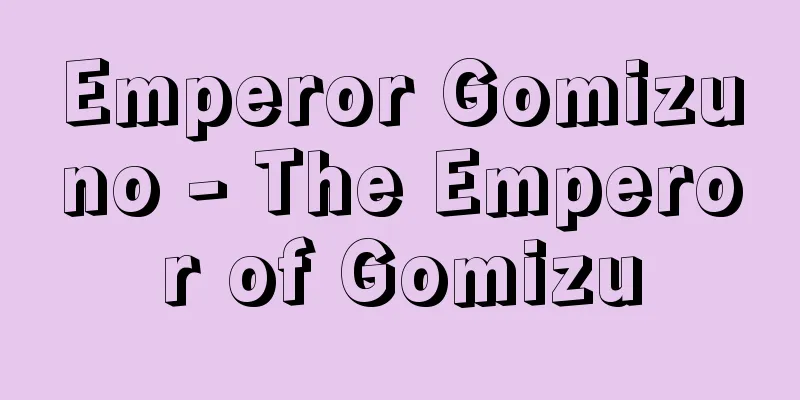
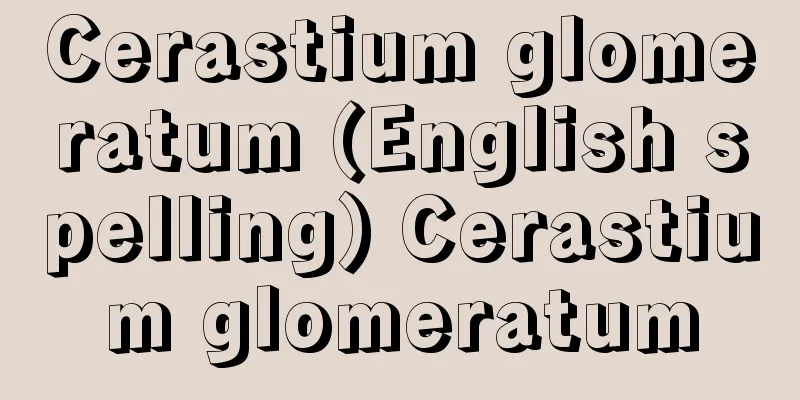
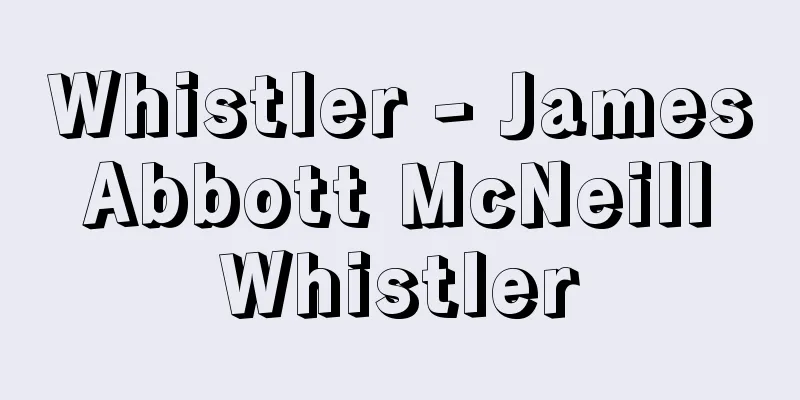
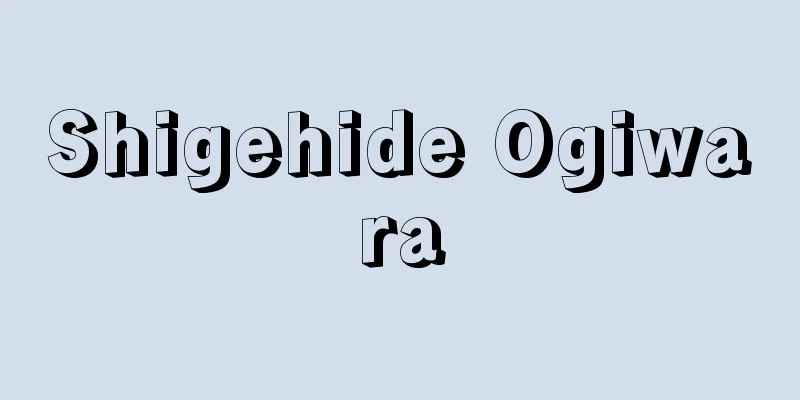
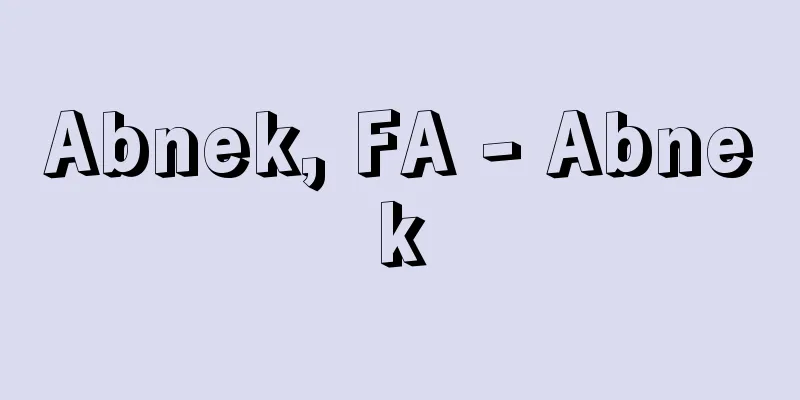

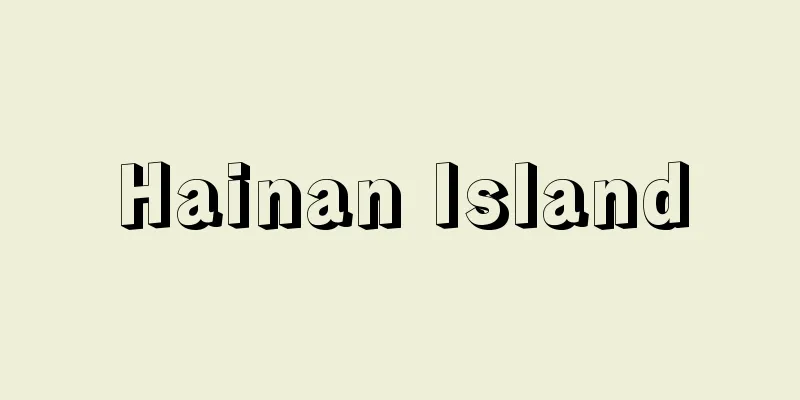


![Touin [town] - Touin](/upload/images/67cc4d319a5fb.webp)